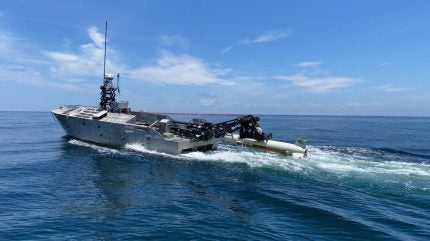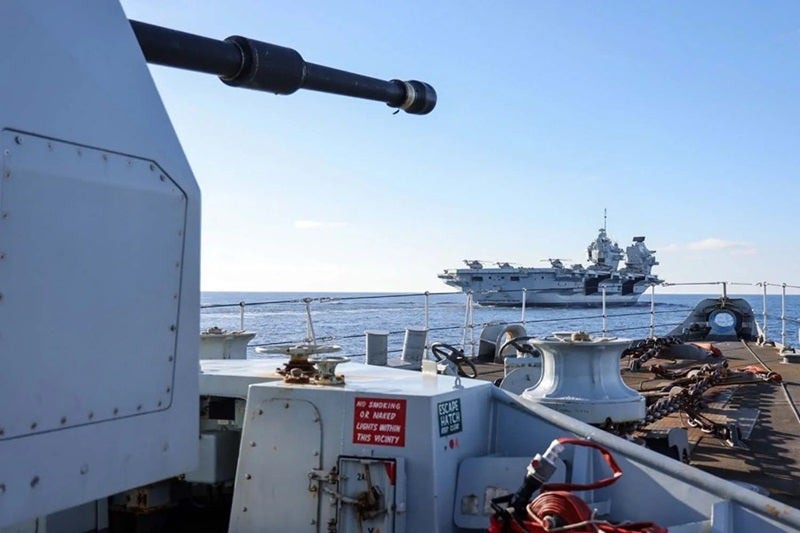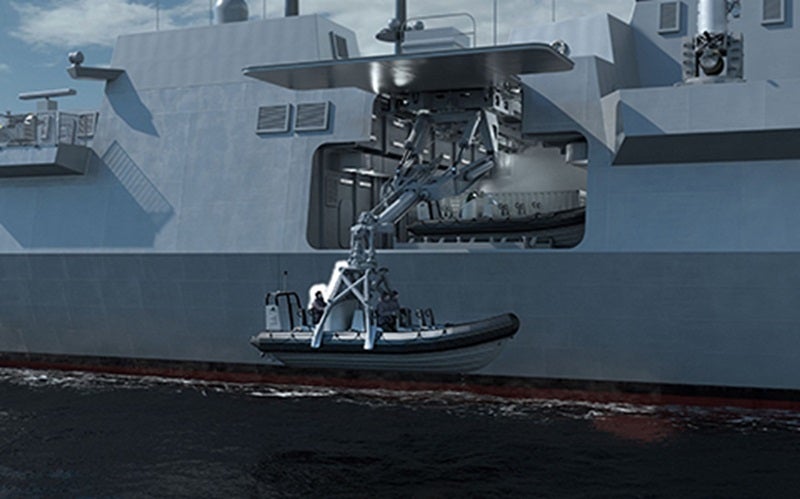
According to Raytheon, there is no longer a need to spend big on specific platforms to deliver a particular effect.
John Sutcliffe, head of requirements and capture naval power at Raytheon UK, made the point in an interview with Naval Technology in Oslo, Norway, during the recent Undersea Defence Technology conference.

Discover B2B Marketing That Performs
Combine business intelligence and editorial excellence to reach engaged professionals across 36 leading media platforms.
It appears there has been a shift towards a network-centric approach to military operations in which systems work within a digital architecture to deliver an effect against an adversary.
“If you’re a hard-strapped government that needs some level of capability for the security of your nation, and you can’t afford everything” in a time of global animosity, Sutcliffe observed, your primary concern will be the ability to rapidly deliver a capability.
Deploying a capability no longer depends on the production of customised and costly platforms, he said, arguing for their eventual ‘demise’. This prospect is an increasingly popular one, with some companies even anticipating the eventual “extinction” of the classical surface combatant as we know it.
This is best exemplified, Sutcliffe said, with a Carrier Strike Group where platforms balance their role between protecting the carrier, enabling the strike, and their standing commitments elsewhere until these warships are recalled again.

US Tariffs are shifting - will you react or anticipate?
Don’t let policy changes catch you off guard. Stay proactive with real-time data and expert analysis.
By GlobalData“You are not designing a platform just to look after another one,” he suggested. “A Type 45 [destroyer] can look after a carrier, that’s great, but why can’t it do other things?”

Type 31/26
With frigates leading the global military vessels market, followed closely by destroyers, GlobalData intelligence indicates that investment in new warships shows no sign of abating.
“There needs to be a baseline capability in the platform,” Sutcliffe stipulated, “because either it’s just too difficult to change [the kit] in and out, or it will always be useful.”
“Let’s just say anything that’s over 3,000 tonnes will come with a propulsion plant, a five inch gun and a navigation radar. Then, even if it has nothing else on it, it can still do something useful, and it can still safely travel on the high seas. What is that baseline?”
The new open systems design of Type 31 and Type 26 frigates allows the force to insert and replace required capabilities into the platform.
Type 26 City-class frigates include a mission bay and handling system developed by Rolls-Royce. Such a concept opens up more space for new kit to be deployed from the multi-purpose platform, such as uncrewed maritime vehicles.

Royal Navy: a more nimble navy
Presently, the Royal Navy has implemented a new operating concept in which warships will maintain a persistent forward presence. Under this model, the Ministry of Defence argued, five ships will take on the work of 11 vessels deployed from Britain.
The concept was introduced in early December 2024, several days after the government axed numerous legacy platforms, which suggests the forward presence plan is about filling gaps in the force structure.
With a requirement for fewer warships, the Navy will resort to acquiring more capabilities as part of its digital architecture, as Sutcliffe espoused. The force will prioritise capabilities over platforms, something Raytheon is well-positioned to deliver as a major supplier of weapon systems.
One such product is the Tomahawk cruise missile, a weapon that has been used in land warfare extensively since Operation Desert Storm in 1991. However, the US Navy is pursuing a new anti-ship variant, known as the Block V iteration, or the ‘Maritime Strike Tomahawk’.
This could be used to kit out smaller, cheaper, and perhaps existing and available vessels. Sutcliffe pointed to the rising popularity of missile barges in the naval domain, suggesting the “missile barge doesn’t have to be something that’s designed to be a missile barge. It could be a London barge of the Thames.”
The Royal Navy are beginning to realise this kind of federated and disaggregated force structure, having already used commercial vessels such as SD Northern River to embark a new uncrewed maritime vessel in the Firth of Clyde at the end of last year.
Raytheon in Europe
It is worth noting, however, that Raytheon’s portfolio, which largely feeds into the American defence industry, may prove less competitive at a time when Europe is confronting the need for strategic autonomy.
Europe’s sovereign defence industry is starting to stretch its muscles. Two weeks ago, Eric Béranger, the CEO of MBDA, the continent’s leading complex weapons manufacturer, said that the group can, when customers ask, deliver fully sovereign systems.
Countries are looking to “desensitise” from American industry, Béranger suggested, at a time of tariffs and mistrust in their erstwhile ally and security guarantor.
Edit note: This story has been amended for clarity.





